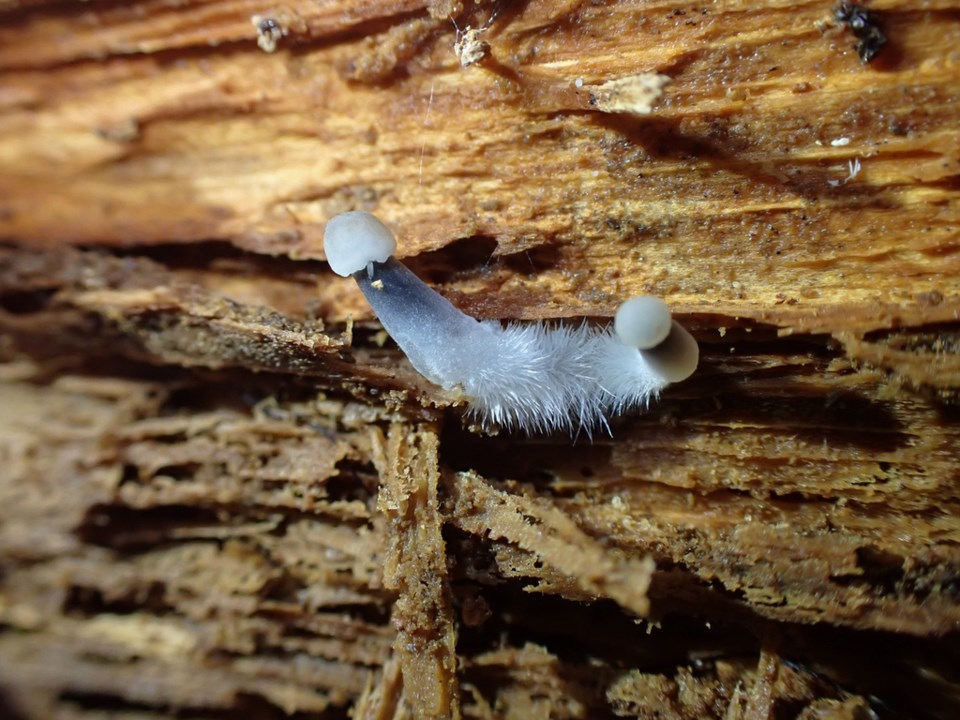Mushrooms. The first that come to mind are probably the large, colourful, and well-known, like the edible King Bolete (Boletus edulis) or the iconic Fly Agaric (Amanita muscaria). But hidden in the underbrush are a group of humble fungi that play a significant role in our forest ecosystem—the elusive “Little Brown (or Boring) Mushrooms,” a.k.a. LBMs. Despite their demure stature, LBMs contribute to the biodiversity and health of forest environments, quietly contributing to nutrient cycling and as food for fellow forest dwellers, all while remaining a challenging group of fungi to study.
LBMs are generally categorized as small- to medium-sized, brown, tan, or beige, but many are also white–often bright white! There are many small mushrooms that have yellow to orange to red colouration, even slightly purple, but those often grab our eyeballs’ gaze, unlike their white and brown cousins, the classic LBMs.
Many LBMs are saprotrophic, vital decomposers, breaking down organic matter such as fallen leaves and decaying wood. In doing so, they recycle nutrients back into the soil, creating a rich environment for other organisms to thrive. Without decomposing fungi, forest ecosystems would struggle, as nutrients would remain locked in organic matter instead of being released back into the soil, waste would accumulate, and the ecosystem would collapse.
One of the primary reasons LBMs are ignored is the difficulty in identifying them. With their uniform coloured body, general lack of distinctive features, and, of course, their size, which requires extra effort to view any part of them, it’s no wonder LBMs stump mycologists! Some species look almost identical to one another, and only microscopic examination of their spores and/or DNA testing can reveal their true identity. Mycologists believe many species of LBMs have yet to be documented, a common theme across the Fungal Kingdom.
More than 1,000 species of fungi have been documented through the Whistler Biodiversity Project and through the help of scientists attending the Whistler Naturalists’ BioBlitzes and Fungus Among Us festivals. The family Mycenaceae fits the LBM description well; 38 total species have been documented in the Whistler area. Mycenaceae includes the genus Mycena, commonly known as “bonnets.” Mycenas in our area can typically be found in clusters on decomposing wood. They are a diverse, worldwide genera and were recently found growing out of a living frog in India! What?! A 2023 study found this genus “present in living plant roots across species,” which challenged our understanding this was a purely saprotrophic genus (Harder et al., 2023).
LBMs can provide a home for insects during their lifecycle and a food source for a wide variety of forest creatures. Nematodes, gnats, flat bugs, collembola (springtails), ants, beetles, and more all potentially utilize LBMs for food. Snack time! If not for our plate, definitely for others!
LBMs remind us not all important aspects of nature are showy or immediately apparent. These modest fungi may not grab our attention like the morel’s honeycomb cap or the deep red cap of a Russula sp, but their role in maintaining the balance of forest ecosystems cannot be underappreciated. So next time you’re in the woods, take a closer look at the forest floor—you will discover an LBM quietly playing its part in the cycle of life.
Naturespeak is prepared by the Whistler Naturalists. To learn more about Whistler’s natural world, go to whistlernaturalists.ca.




